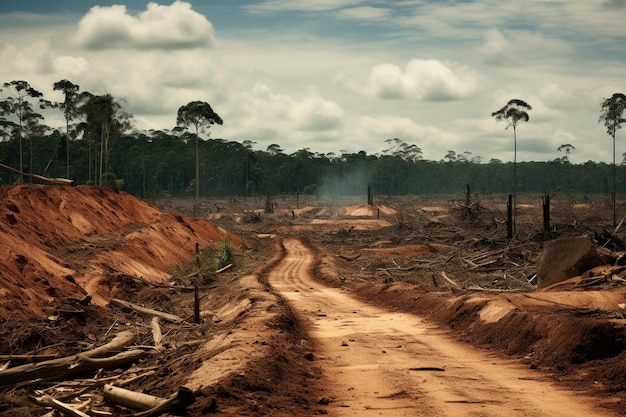Japan, a nation often lauded for its technological prowess and cultural heritage, faces an intricate web of challenges in addressing climate change. Despite its status as a developed economy, Japan is one of the world’s major contributors to global warming. This paradox begs the question: Why does a nation known for its innovation and forward-thinking solutions struggle to rein in its carbon footprint? The reality is complex, fueled by a mix of historical industrialization, energy dependency, and societal norms.
Historically, Japan’s rapid economic growth during the post-World War II era catalyzed an industrial boom. This growth, crucial for rebuilding the nation, came at a considerable environmental cost. In the late 20th century, Japan evolved as one of the leading economies globally, heavily reliant on fossil fuels for energy. Consequently, this dependency positioned Japan among the top carbon emitters in the world, yielding a pressing challenge that transcends mere statistics.
The ramifications of climate change are evident in Japan’s environment—rising sea levels, changing precipitation patterns, and an increase in the frequency and intensity of natural disasters such as typhoons and heavy rainfall. While Japan’s geographical location makes it inherently vulnerable to such phenomena, the undercurrents of human activity exacerbate its susceptibility. According to scientists, neglecting the environmental consequences of industrial advancement has not just implications for nature, but for the populace at large—its health, livelihood, and safety.
A paragon of tradition meets modernity, Japan’s societal norms predominantly favor productivity and efficiency, often at the expense of environmental considerations. The concept of “monozukuri,” which translates to “the art of making things,” embodies a national pride in manufacturing excellence. However, this focus can overshadow sustainable practices. Consequently, Japan continues to grapple with balancing industrial demands with environmental stewardship. For instance, while initiatives for sustainable development have emerged, they sometimes clash with the existing socio-economic structures that prioritize immediate economic gains over long-term ecological benefits.
One cannot ignore Japan’s energy landscape, marred by the aftermath of the Fukushima disaster in 2011. The catastrophe resulted in a significant populace shift regarding nuclear energy, which had previously been a pillar of the nation’s energy supply. In response to the disaster, Japan turned back to fossil fuels, causing a spike in greenhouse gas emissions. This pivot has sparked an ongoing debate: can Japan efficiently pivot to a sustainable energy model without compromising its economic integrity? The urgency of the climate crisis necessitates a renewed examination of energy policies and an unwavering commitment to renewable resources.
Renewable energy presents a promising avenue for Japan to reduce its carbon emissions. Solar, wind, and geothermal energy resources are abundant, offering the potential for a transformative shift in energy consumption. Nevertheless, challenges persist, primarily in the realm of technological adaptation and grid management. Japan’s insular geography presents both an obstacle and an opportunity; harnessing domestic energy sources could create not just environmental benefits, but also a more resilient economy, reducing reliance on imported fossil fuels.
Furthermore, Japan’s urban centers exemplify a significant portion of the country’s emissions. As urbanization continues to rise, the concentration of people leads to increased energy demand, exacerbating greenhouse gas outputs. Building sustainable cities that embrace green architecture, public transportation, and community engagement is vital in mitigating the impact of urban living on the environment. Engaging citizens in ecological initiatives—from tree planting to waste reduction—could invoke a cultural shift toward sustainability, fostering community resilience in the face of climate threats.
Education plays a pivotal role in fostering a deeper understanding of climate challenges among citizens. By integrating environmental education into school curriculums and community programs, Japan could cultivate a generation equipped to tackle climate issues with innovation and commitment. Empowering young minds to think critically about their environmentally conscious choices is imperative for the sustainability movement to take root within society.
International cooperation also looms large in the context of climate action. As a member of the global community, Japan has a responsibility to lead by example, participating actively in international accords like the Paris Agreement. However, the nation must first confront its internal contradictions and strive for holistic policy coherence that unites economic and environmental goals. Japan’s ability to share its technological advancements with emerging economies can also pave the way for global environmental progress, strengthening collective resilience against climate change.
In conclusion, Japan’s climate challenge is not merely a national conundrum; it poses a significant global quandary. It serves as a poignant reminder that progress should not come at the expense of the planet. Transitioning towards a low-carbon economy demands collective effort—from policymakers to citizens. Harnessing innovation, revising energy policies, advancing urban sustainability, and fostering educational initiatives are critical steps. Can Japan transform its climate narrative from one of contribution to one of redemption, leading the charge in global sustainability? The potential is there, but it ultimately rests on the commitments made today for a healthier, more sustainable tomorrow.








